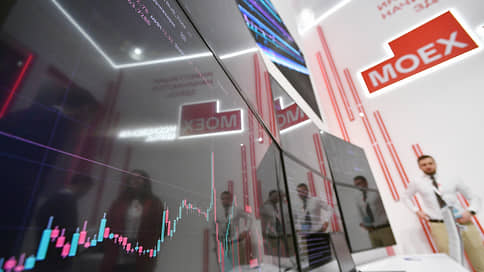The Moscow Exchange index exceeded 3,400 points for the first time since the start of the SVO
[ad_1]

The Moscow Exchange index exceeded 3,400 points for the first time since the outbreak of hostilities in Ukraine. Experts attribute the confident rise of the Russian market in recent weeks to active dividend purchases and rising oil prices. However, many risks remain for the market – first of all, this is the extension of the Bank of Russia’s tight monetary policy, strengthening of foreign economic restrictions, as well as lower prices for raw materials.
The Moscow Exchange index confidently consolidated above the level of 3,400 points. During the main trading session on April 4, it reached 3409.62 points, updating the maximum since February 22, 2022, and as a result it stopped at 3407.57 points. The index continued to grow for the second week; overall it added 4%. Before this, the index fluctuated in the range of 3000–3300 points for almost eight months.
First of all, the index is strongly supported by the expected and already begun large-scale dividend payments.
Finam estimates the dividend yield of the Russian market according to the Moscow Exchange index at 9.3% for the next 12 months.
According to Digital Broker, for 2024 the total volume of dividends could reach a record 4.9 trillion rubles. In particular, at the end of March, the register of NOVATEK shareholders was closed before paying more than 130 billion rubles. By the end of April, the registers for the approved dividends of the Cherkizovo group, the Positive group, and the developer LSR will be closed (the total volume of payments will exceed 20 billion rubles). In May, the registers of LUKOIL, the Moscow Exchange, and InterRAO will be closed, which will send a total of more than 400 billion rubles to shareholders. The highest payments (register closure date has not been approved) are expected for Sberbank shares – almost 770 billion rubles.
According to BCS, the dividend yield of some issuers (Tatneft, Surgutneftegaz, Gazprom Neft, Sberbank) reaches 11–15%. Most issuers are trading with a dividend yield below 10%, and according to this indicator they are inferior to rates on the bond market, in particular OFZ (13.4–15.5% per annum). However, stocks usually benefit from ruble devaluation. Natalya Malykh, head of the equity analysis department at Finam Financial Group, expects “higher exchange rates by the end of the year.”
New issuers entering IPO also approve attractive dividend policies to attract investors.
Leading analyst at the investment company Digital Broker Daniil Bolotskikh says that in most cases we are talking about payments of at least 50% of net profit. Even taking into account the low free-float of the Russian market, as well as the reinvestment of not all dividends received, analysts estimate the additional influx of funds into it at hundreds of billions of rubles.
The market is supported by rising oil prices, Sergei Rybakov, chief operating officer of Go Invest, also notes. The day before, Brent quotes on the spot market exceeded $90 per barrel for the first time since October 2023 (see “Kommersant” dated April 4). Since the beginning of the year, prices for European oil grades have increased by 17–20%. “Over the long term, rising oil prices are, of course, positive. Thus, the budget is being filled in excess of the Ministry of Finance’s plan, even taking into account the production reduction as part of the OPEC+ deal. If current prices remain the same, the Ministry of Finance will buy foreign currency within the framework of the budget rule, that is, increase reserves,” he says.
Mr. Rybakov adds that the overall indicator of the Bank of Russia’s business climate in March increased to its highest value in 12 years: companies’ assessments of demand and output of goods and services have improved, expectations for future production and demand are record highs since May 2013.
According to analysts, over the 12-month horizon the index could reach 3,778 points, which implies an upside of 11.2% from the current level. Risks for investors in the current situation, Gazprombank Investments clarifies, include the continuation of the Bank of Russia’s tight monetary policy in the second half of the year, strengthening of foreign economic restrictions and a possible decline in commodity prices on world markets.
[ad_2]
Source link





